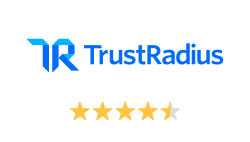System hardening is a combination of tools, techniques, and best practices that successfully reduce the attack surface across your systems, applications, and IT infrastructure by identifying and addressing security vulnerabilities. The process involves removing unnecessary software, services, account functions, applications, ports, and permissions with the main goal of strengthening your organization’s overall security posture and making your endpoints more resistant to cyberattacks. By doing so, you are leaving fewer chances for the cybercriminals to breach your systems, inject malware, or steal sensitive information.
How Does System Hardening Work?
The hardening process begins with inventory assessment, where you have to identify all of your endpoints in your network and use penetration testing and vulnerability assessment tools to successfully identify potential security vulnerabilities.
Then you must take appropriate actions to secure your operating systems, applications, servers, and endpoints. This includes disabling unused ports and services, removing unnecessary drivers or applications, and properly configuring user privileges based on the principle of least privilege.
The next step you have to take is to keep your OS and third-party applications updated by applying security patches once they are released by vendors, since using outdated software creates critical vulnerabilities in your endpoints that make them prime targets for attackers.
That’s why you need to equip your organization with a reliable, trusted, and effective patch management tool. Because these solutions can automate vulnerability identification, risk-based prioritization, patch testing, deployment, and reporting with just a few clicks, helping your company not only discover critical software flaws but also address them as quickly as possible.
Another core step when you perform system hardening includes changing default passwords, configuring strong two-factor authentication, and enforcing strict access controls to ensure only authorized users can access your business’s sensitive information and systems. This way you ensure that in case cybercriminals somehow steal login credentials from an employee or exploit a vulnerability and breach an endpoint, they won’t be able to access your business confidential information, since they can’t pass the additional authentication steps.
Last, but not least, hardening your systems includes disabling default accounts, securing system files, enforcing encryption for data at rest and in transit, and applying security templates based on industry standards such as CIS Benchmarks or NIST guidelines.
When done right, system hardening makes your endpoints and servers more resilient to cyberattacks, but remember that this is not a one-time task; it’s a continuous process that needs constant efforts to improve your overall security posture, since your infrastructure constantly grows and new devices are being added to your network on a daily basis.
Simply put, hardening the system(s) makes it significantly more difficult for attackers to find and exploit weaknesses, since they are minimized as much as possible, helping your company stay secure, compliant, and resilient.
How Does System Hardening Work Against Known and Unknown Threats?
The vast majority of modern cyberattacks don’t end after the initial exploit. Many exploits or kill chains require native system utilities to fire successfully as well; gaining access is just the first step. Attackers need to:
-
Move laterally.
-
Gain persistence.
-
Download additional payloads.
-
Escalate privileges.
-
Query local configuration.
-
Disable defenses.
-
Exfiltrate data.
To do this, they often use a familiar toolkit of built-in Windows utilities, commonly referred to as “LOLBins,” such as `cmd`, `PowerShell`, `certutil`, and `ftp`. If those tools are disabled or restricted for non-admin users, the attacker’s operation can be immediately hindered. LOLBins are short for ”Living Off the Land Binaries,” and that is exactly what they are trying to do. Survive on what they find in your systems when they get there.
Picture it like this: you set off across a desert with the intent that when you get to the other side, there will be water. But when you get there, the watering hole is dry; this severely alters your plans and even possibly represents the end of the road entirely. When you harden, you are doing the same thing to your systems; it has multiple effects:
-
Can Completely Stop Stage 2: Many attacks stall before effectively doing anything, halting lateral movement or persistence and even potentially rendering the vector inert entirely.
-
Increases Detection: Attackers fall back to noisy or fragile methods while making additional noise and logs in their failed attempts.
-
Amplifies Human Resources: Your analysts and engineers spend time on high-fidelity alerts, not telemetry overflow. While also potentially giving you a slightly longer window of action to make more informed decisions and mitigation strategies.
-
Improves After-Event Visibility: Detection becomes easier even when no one is watching; audit trails and detection systems produce more data and actionable intel.
What are the Benefits of System Hardening?
Investing time and effort in system hardening pays off by improving your organization’s security posture and reducing the chance of experiencing a successful cyberattack.
But let’s break down what this actually means for your company and why it matters more than most business owners realize.
Reduced Attack Surface: The more unnecessary services and software running on your endpoints, the more vulnerabilities attackers can exploit. But when you disable these services, implement role-based access controls, and keep your devices up-to-date with the latest security updates, you are literally narrowing the space left for a cyberattack to slip through. Although this does not make you 100% immune to hackers, it minimizes the chance of experiencing a cyberattack. The truth is that your IT infrastructure becomes a much harder target, and that’s exactly what you need: peace of mind that every single device across your network is secured enough to withstand the countless nasty cyberthreats you face daily.
Stronger Security Posture: By implementing the security measures we already mentioned, the overall security posture in your organization is strengthened, making your organization’s endpoints more resistant to security threats leading to catastrophic consequences such as data breaches, ransomware, malware, or phishing attacks. This boosts your business continuity and prevents costly downtime that sometimes takes weeks or even months of recovery time and hundreds of thousands of dollars in potential regulatory fines.
Improved Endpoint Performance: Removing unnecessary services, software, and drivers not only maximizes your security but also frees up resources that your computer systems can use. This enables your endpoints to run faster, your employees to waste less time waiting for applications to load, and can extend the lifespan of your IT equipment through reducing the workload on the system components.
Effortless Regulatory Compliance: The best way to avoid regulatory penalties and fines is by keeping your systems updated with the latest security patches, maintaining consistent and strong security settings, and following system hardening standards across all your endpoints. Whether you’re meeting system hardening requirements for protecting electronic personal health information or other industry standards, hardened systems make compliance straightforward. If you have ever dealt with regulatory audits, you understand that improper system maintenance can be a nightmare and bring you serious headaches.
Data Breaches Become Significantly Less Likely: When you implement patch management tools, intrusion prevention systems, lock down remote access points, and establish proper systems permissions, you’re creating multiple barriers that hackers have to overcome to set foot on your devices. Even if someone manages to gain access initially, they hit wall after wall trying to move through your network.
Cost-effectiveness: Nobody talks about this enough, but security incidents are expensive, really expensive. By hardening your systems, you’re avoiding the massive costs that come with data breaches, system downtime, and emergency response situations. Your organization saves money while building stronger defenses.
What are the 5 Types of System Hardening?
The five types of system hardening are server hardening, software application hardening, operating system hardening, database hardening, and network hardening. It’s important to focus your efforts on all five types to strengthen your overall security posture in your organization’s network.
Below, we will discuss them in detail to give you a better idea of their purpose and importance:
Operating System Hardening
OS hardening includes disabling unnecessary software (that is not critical for your business operations), drivers, and services, plus limiting administrative privileges. These measures are highly effective for reducing the attack surface across your endpoints, since each of these components can create entry points for cybercriminals attempting to exploit vulnerabilities and penetrate your systems.
Server Hardening
Server hardening helps you secure your servers by protecting ports, functions, data, and permissions. This requires strong and efficient access control policies, properly limiting user accounts, and closely monitoring your network traffic for unusual traffic spikes that may indicate a potential cyberattack. These measures help your organization comply with strict regulatory standards like NIST or CIS Benchmarks.
Network Hardening
Network hardening demands implementing firewalls, intrusion detection systems, and network segmentation that effectively isolate and protect your critical systems and communication channels from unauthorized access. Furthermore, by encrypting your organization’s network traffic and securing remote access points, you ensure that even if somehow hackers breach one of your security measures, they will be stopped by the rest of the “walls” you have built to restrict their access and prevent lateral movement.
Application Hardening
This type of system hardening focuses on securing the software applications your employees use during their workday by disabling unnecessary services and features, enforcing strict access controls, and, most importantly, deploying the latest security updates across all third-party apps.
Database Hardening
Database hardening is the process responsible for securing your database by implementing security measures to reduce its vulnerability to attacks and unauthorized access, leading to data leakage. To boost database security, you must start enforcing access controls, encrypting confidential data, and fine-tuning security settings, thus reducing the risks of data breaches.
These five system hardening types can help you maintain effective and reliable cyber hygiene; however, keep in mind that if you neglect even one of them, your efforts will be worthless. Hardening your organization’s systems is like building a house; you need strong walls, a solid roof, windows, and locked doors. So when going through the system hardening process, take it step by step, don’t rush, since this creates prerequisites for leaving potential security vulnerabilities unaddressed.
What are the Best Practices of Implementing System Hardening Standards?
Implementing system hardening standards requires a systematic approach to be effective. Below, you will find a comprehensive system hardening checklist with proven best practices to secure your infrastructure properly.
-
Keep Everything Updated with Automated Patch Management
If you are not using an automated patch management tool, now is the time to start using one to address vulnerabilities promptly before they lead to a devastating cyberattack. With it, you can completely automate patching processes for your OS and third-party applications. Patch management solutions provide you with the ability to identify vulnerabilities and missing patches, test them in lab environments to ensure reliability, deploy them across all of your endpoints, and finally generate audit reports swiftly.
-
Disable or Remove Everything You Don’t Actually Need
Avoid installing unnecessary software, disable services you or your employees don’t use and need, and remove drivers for hardware you replaced months or years ago. Every piece of software on your devices is a potential attack vector, so be ruthless about what stays and what goes to reduce your system’s attack surface.
-
Lock Down User Access Based on Job Requirements
If too many of your employees have administrative privileges, fix it immediately. Implement role-based access control where salespeople can access only sales systems, accounting staff can access financial data, and IT has admin rights only when required. Proper user account management allows you to limit access to sensitive data and review user accounts whenever necessary, such as when you need to disable accounts for employees who leave your organization or change roles.
-
Configure Strong Authentication Across All Systems
Encourage your employees to use complex passwords and deploy multi-factor authentication where possible. A good practice is to equip your team members with password managers, since they not only securely store but also generate strong passwords that are difficult to crack. For your most critical business systems, enhance protection by implementing certificate-based authentication instead of passwords as part of robust security measures.
-
Close Unnecessary Network Access Points
Regularly audit your firewall rules and close any ports that aren’t actively needed for business operations, since they can become entry points for hackers. Don’t give them those opportunities. Next, set up network segmentation so your accounting systems can’t directly communicate with your web servers. Encrypt network traffic between critical systems and train your IT team to monitor network traffic in real time for unusual patterns that indicate potential cyberattacks.
-
Run Regular Security Audits and Vulnerability Scans
Software vulnerabilities are disclosed daily; that’s why you or your IT team must schedule automated vulnerability scans at least once per month across all endpoints in your network. Additionally, it is crucial to run penetration tests to identify new security weaknesses.
Advanced security tools not only assess your current security posture but can also automate remediation, prioritizing risks based on actual business impact rather than just CVSS scores.
-
Monitor Configuration Changes in Real Time
Implement configuration management and monitoring tools that alert you when someone modifies critical security configurations across your IT system(s). Many breaches happen because hackers disable logging, modify firewall rules, or create new user accounts without anyone noticing.
-
Train Your Team on Security Fundamentals
Even the best system security hardening efforts mean nothing if your employees easily fall for phishing emails or install malicious software unintentionally. Provide regular security awareness training that covers current attack techniques, not just generic “don’t click suspicious links” advice. Run simulated phishing campaigns to identify who needs additional training and measure improvement over time, because effective system hardening requires both technical controls and human awareness.
Strategy: Restrict Tools for Non-Elevated Users Only
Blocking tools globally often breaks functionality for legitimate administrative and system-level tasks. The better approach is to restrict execution for non-elevated (standard) accounts while preserving access for SYSTEM, Administrators, and TrustedInstaller.
This aligns with how attackers typically operate: they compromise standard users first, then try to escalate.
10 High-Impact Tools to Disable or Restrict
These tools are commonly used for malicious purposes but are rarely needed by standard users. Here’s what to do or disable, why, and how. I included ICACLS examples in case you want to script or automate some of these. But setting the permissions by other means is completely adequate as well.
The commands below: “icacls <path> /inheritance:r /remove “Users” /deny Users:(RX)” will take the file in <path> break inheritance, remove any explicitly defined ACL for “Users,” and then add an explicit deny ACL for “Users” to read or execute the binary. This preserves any other ACLs as they are converted to explicit in the process.
1. Deny ftp.exe
Why: Used to exfiltrate or fetch payloads.
How: icacls %SystemRoot%\System32\ftp.exe /inheritance:r /remove “Users” /deny Users:(RX)
2. Deny certutil.exe
Why: Commonly abused to download and encode payloads.
How: icacls %SystemRoot%\System32\certutil.exe /inheritance:r /remove “Users” /deny Users:(RX)
3. Deny powershell.exe
Why: Popular in file-less attacks and script-based malware.
How: Prefer AppLocker or WDAC to block unsigned scripts or deny usage to non-admin groups. Remember as well, PowerShell has many ways to bypass execution policies, so restricting execution rights is best if they can be restricted to admin users only.
4. Deny cmd.exe
Why: General-purpose shell used for nearly all forms of attack scripting.
How: icacls %SystemRoot%\System32\cmd.exe /inheritance:r /remove “Users” /deny Users:(RX)
5. Deny mshta.exe
Why: Executes HTA (HTML apps), often used to launch scripts from remote sources.
How: icacls %SystemRoot%\System32\mshta.exe /inheritance:r /remove “Users” /deny Users:(RX)
6. Restrict regsvr32.exe
Why: Executes DLLs and COM scriptlets; used in living-off-the-land techniques.
How: Block via AppLocker or WDAC where possible.
7. Block wscript.exe and cscript.exe
Why: Legacy scripting engines for .vbs and .js files.
How: reg add “HKLM\Software\Microsoft\Windows Script Host\Settings” /v Enabled /t REG_DWORD /d 0 /f
8. Deny netsh.exe
Why: Used to reconfigure firewalls, proxy settings, or packet capture.
How: icacls %SystemRoot%\System32\netsh.exe /inheritance:r /remove “Users” /deny Users:(RX)
9. Restrict rundll32.exe
Why: Executes functions within DLLs, sometimes allowing silent execution of malicious code or OS functions to perform tasks that do not log like traditional methods.
How: Block in AppLocker with a rule targeting non-admin users.
10. Restrict PowerShell Commands: Invoke-WebRequest, Invoke-Expression
Why: Used to download and run malicious scripts.
How: Use Attack Surface Reduction (ASR) rules, or enable Constrained Language Mode for standard users.
Bonus Tools: Use Application Control Where Possible
-
AppLocker: Great for environments with Group Policy. Create allow/deny rules by path, publisher, or hash.
-
WDAC: Stronger and kernel-enforced. More complex but ideal for hardened systems.
-
Software Restriction Policies (SRP): Still effective for legacy environments.
-
Do not stop here; do some research into the other tools commonly used to carry out stage 2 of exploits. These are just 10 of many, always test system function after making each change, and keep accurate records of hardening steps in case changes or reversion are needed in the future.
Thoughts to consider
Why is system hardening important? Because it doesn’t just reduce risk; it disrupts adversaries and is especially effective on automated attacks (bots, worms, script kiddies, etc.) because they cannot dynamically adapt to varied conditions. It makes your systems tougher, your alerts clearer, and your team more effective.
It should not be considered a defense strategy alone as much as part of an effective defense strategy, including expedient patching, logging, and auditing.
In a world of overextended defenders, hardening gives you leverage and the extra time you may need to root out attacks and stop them from progressing.
“You cannot always stop or even know about every exploit coming your way, but you can do a lot about what they can do next.”
Action1 – A powerful Autonomous Endpoint Management Platform to Harden Any System
Equipping your organization with Action1’s cloud-native autonomous endpoint management platform helps you significantly harden your systems. As mentioned earlier, outdated operating systems or third-party software increase your systems’ attack surface and make them vulnerable to cyber attacks.
Hackers are aware of these flaws and constantly try to exploit them to gain unauthorized access to your network. If they succeed, they can deploy malicious software, exfiltrate sensitive data, or even encrypt your business-critical systems, causing downtime and leaving you with no other choice than paying the ransom to regain control over your endpoints.
However, with Action1, you can minimize these risks to almost zero by keeping every single endpoint across your network current and operating with the latest security updates.
How does this work? By visiting our website, creating an account, and installing the software, which takes no more than 5 minutes (note: every endpoint in your network must have the agent installed). Afterwards, the software does all the hard work instead of your IT team. Once installed, Action1 identifies all vulnerabilities across your devices and prioritizes them based on their severity and potential business impact.
Next, the intuitive platform shows a list of all missing updates across your operating systems and third-party applications. From that moment, you can start planning and scheduling their deployment, beginning with rigorous testing by taking advantage of the update rings feature, which allows you to group your endpoints into so-called “rings.”
Start with a small test group of devices to ensure that only reliable and tested patches reach your production environment through staged rollouts, where you can establish specific success rates and deployment counts in each ring to decide if an update should proceed to the subsequent ring.
Updates that successfully pass these metrics in earlier (or “inner”) rings automatically move forward to the outer rings while providing the ability to manually exclude updates if needed. This intelligent staged rollout approach ensures that updates are regularly validated, with the goal of reducing the risk of problematic updates reaching your business-critical systems that can cause downtime.
With flexible scheduling options, your IT team can create specific business-aligned maintenance windows outside business hours to prevent unexpected operational disruptions. Furthermore, large enterprises and managed service providers can benefit from update approval/decline on a per-organization level. This feature enables the deployment of specific updates across different departments and clients, where you can decide whether a particular update or a group of updates must be installed for one organization while declining or delaying them for another to avoid downtime.
Simply put, Action1 offers complete automation of the patch management process, eliminating manual burden, hardening your systems, remediating vulnerabilities in a timely manner, boosting your employees’ productivity, and providing you with peace of mind knowing your organization’s overall security posture is strengthened.
Action1 is a cloud-native platform that not only provides you or your IT team with access to on-premises and remote endpoints directly from your browser without needing VPNs but also has its own software repository where all updates are tested before being released. The P2P (peer-to-peer) update distribution minimizes external bandwidth usage and ensures rapid deployment of large updates without any on-premises cache servers. Instead of each of your endpoints downloading a particular update, it’s downloaded once and then shared between those devices.
Action1 is certified for SOC 2 and ISO 27001, which is another reason why it’s trusted by thousands of enterprises and manages millions of endpoints worldwide. The software has an intuitive and user-friendly interface where you can easily generate compliance reports after each update deployment. Thus, eliminating the countless hours your IT team would otherwise spend annually compiling the reports needed for regulatory compliance. The platform offers 100+ built-in reports on patching, software and hardware inventory, and security configurations. You can also customize existing report templates by adding or removing columns, changing specific filters, ordering, grouping, and more.
And last but not least, Action1 is free for up to 200 endpoints. Without any functional limits, you can use it as long as you want without paying a single dollar. Enabling you to try it as long as you want in your test lab and then seamlessly scale from hundreds to hundreds of thousands of endpoints at a gradually lowering per-endpoint cost, or use it forever in your small business.
Make the smart move and start using Action1 to improve your organization’s overall security posture by automatically patching your Windows OS, macOS, and third-party applications. While cybercriminals won’t like it, your IT team will definitely love having a patching solution that just works.
About Action1
Action1 is an autonomous endpoint management platform that is cloud-native, infinitely scalable, highly secure, and configurable in 5 minutes—it just works and is always free for the first 200 endpoints, with no functional limits. By pioneering autonomous OS and third-party patching—AEM’s foundational use case—through peer-to-peer patch distribution and real-time vulnerability assessment without needing a VPN, it eliminates costly, time-consuming routine labor, preempts ransomware and security risks, and protects the digital employee experience. Trusted by thousands of enterprises managing millions of endpoints globally, Action1 is certified for SOC 2 and ISO 27001.
The company is founder-led by industry veterans Alex Vovk and Mike Walters, American entrepreneurs who founded Netwrix, which has grown into a multi-billion-dollar industry-leading cybersecurity company.




